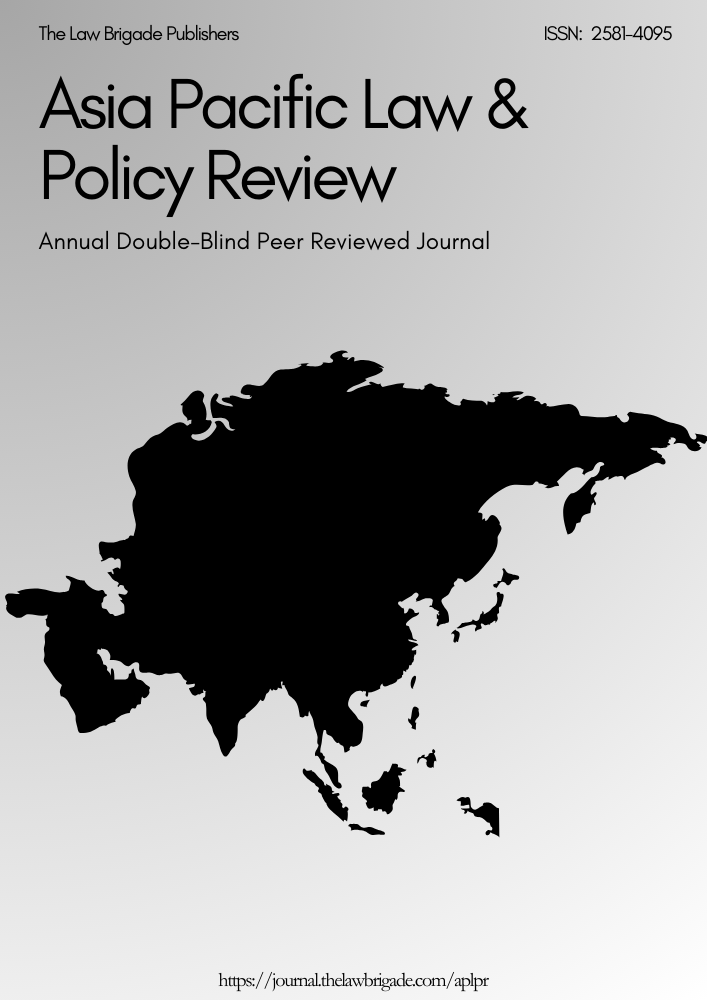A COMPARATIVE ANALYSIS OF THE STANDARDS ADOPTED BY THE JUDICIARY IN MORALITY AS A RESTRICTION ON ARTISTIC FREEDOM IN ECHR AND IN INDIA- WHETHER PROACTIVE OR REACTIVE
Keywords:
ARTISTIC FREEDOM, IndiaAbstract
Art as a facet of free speech is an argument that is potent and at the same time slippery. Article 10 of the ECHR and Article 19(1) (a) of the Constitution of India provides for the freedom of speech and expression. This right is however not an absolute right and it can restricted on the basis of several grounds of which ‘morals’ and ‘morality and decency’ are considered to be most challenging, in the light of standards adopted by the courts in defining the concept of morality. Issues of religion, faith, obscenity, public opinions, etc. are seen to play a large role is shaping the individual right of artistic freedom. These aspects keep changing with given time frame, region, culture etc. The objective of this paper is to analyse art as a form of expression which is a human right and a fundamental right, how the state through laws have restricted this freedom and what is the role played by the courts in instances of a dispute – is it proactive or reactive? For instance, the author considers the doctrine of ‘margin of appreciation’ adopted by the ECHR as a proactive measure to ensure the change in public attitude towards contemporary arts, whereas ‘contemporary community standards doctrine adopted by the Indian Courts is more reactive, as it tends to reflect a different version of the Hicklin’s test adopted by the Courts in previous cases.
Downloads
References
i Cohen v California 403 US 15 (1971).
ii See Chaskalson M, Kentridge J, Klaaren J, Marcus G, Spitz D & Woolman , Constitutional law of South Africa.
Kenwyn: Juta., 1999.
iii 354 U.S. 476
iv 413 U.S. 15
v See generally , I.J. Oosthuizen and C.J. Russo, A constitutionalised perspective on freedom of artistic expression,
South African Journal of Education, 2001, 21(4)
vi vi MOSSE, George L. Nazi Culture: Intellectual, Cultural and Social Life in the Third Reich. Madison: The
University of Wisconsin Press, 1966, p. 3 – 4.
viiSeehttps://translate.google.com/translate?hl=en&sl=cs&tl=en&u=https%3A%2F%2Fcs.wikipedia.org%2Fwik
i%2FThe_Plastic_People_of_the_Universe (last accessed on Dec 5th 2019).
viii Depending on the entries under various Lists of the VII Schedule to the Constitution, laws can be made by both
the center and the state legislatures in India. For instance, dramatic performances is an aspect that comes under
the state list (LIST II) and hence various states have made laws that restrict the artistic freedom of drama. For e.g.,
the Kerala Dramatic Performances Act, defines objectionable material as scandalous, highly obscene, scurrilous
etc. this shows have the restriction of morality has been used by state legislations to restrict artistic freedom.
ix Ronald Dworkin, The Moral Reading of the Constitution, N.Y. REV. BOOKS, Mar. 21, 1996,
xThe Constitution and the Constituent Assembly Debates. Lok Sabha Secretariat 107-131 and 171-183 ( Delhi,
1990).
xiPratap Banu Mehta, What is Constitutional Morality? *13 (Seminar on We the people- a symposium on the
Constitution of India after 60 years:1950-2010, Nov 2010)online at http://www.indiaseminar.com/2010/615/615_pratap_bhanu_mehta.htm (visited on Jan 21st 2019).
xii George Grote, A History of Greece at 93 (Routledge, 2000).
xiii AIR 2018 SC 4321.
xiv 2018 (8) SC J 609.
xv In Manoj Narula v. Union of India 135 (2014) 9 SCC 1
xvi (1976) 1 EHRR 737
xvii [1988] ECHR 5
xviii As in Handyside judgement.
xix Ibid, para. 35.
xx (1994) 19 EHRR 34
xxi ECHR 25 Nov 1996
xxii Vereinigung Bildender Künstler v. Austria judgement, 25 January 2007, no. 68354/01. In: HUDOC [online
database]. Council of Europe [Accessed on 2 February 2018].
xxiii Ranjith D Udeshi v State of Maharashtra 1965 AIR 881
xxiv [1868] LR 3 QB 360
xxv 354 U.S. 476 (1957)
xxvi AIR 2006 SC 3346
xxvii AIR 1970 SC 1390
xxviii AIR 2014 SC 1495
xxix AIR 1986 SC 967
xxx AIR 1971 SC 481
xxxi AIR 2006 (Bom) 259
xxxii AIR 2006 SC 3346
xxxiii Crl. Revision Petition No. 114/2007
Downloads
Published
Issue
Section
License

This work is licensed under a Creative Commons Attribution-NonCommercial-ShareAlike 4.0 International License.
License Terms
Ownership and Licensing:
Authors of research papers submitted to any journal published by The Law Brigade Publishers retain the copyright of their work while granting the journal specific rights. Authors maintain ownership of the copyright and grant the journal the right of first publication. Simultaneously, authors agree to license their research papers under the Creative Commons Attribution-ShareAlike 4.0 International (CC BY-SA 4.0) License.
License Permissions:
Under the CC BY-SA 4.0 License, others are permitted to share and adapt the work, even for commercial purposes, provided that appropriate attribution is given to the authors, and acknowledgment is made of the initial publication by The Law Brigade Publishers. This license encourages the broad dissemination and reuse of research papers while ensuring that the original work is properly credited.
Additional Distribution Arrangements:
Authors are free to enter into separate, non-exclusive contractual arrangements for distributing the published version of the work (e.g., posting it to institutional repositories or publishing it in books), provided that the original publication by The Law Brigade Publishers is acknowledged.
Online Posting:
Authors are encouraged to share their work online (e.g., in institutional repositories or on personal websites) both prior to submission and after publication. This practice can facilitate productive exchanges and increase the visibility and citation of the work.
Responsibility and Liability:
Authors are responsible for ensuring that their submitted research papers do not infringe on the copyright, privacy, or other rights of third parties. The Law Brigade Publishers disclaims any liability for any copyright infringement or violation of third-party rights within the submitted research papers.


